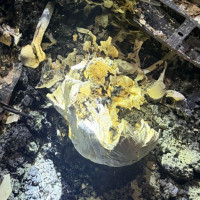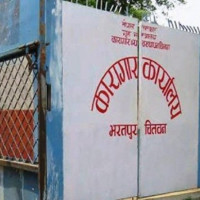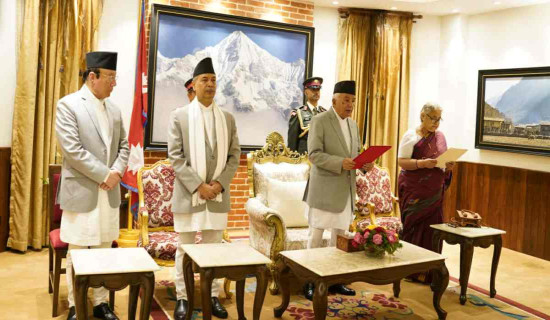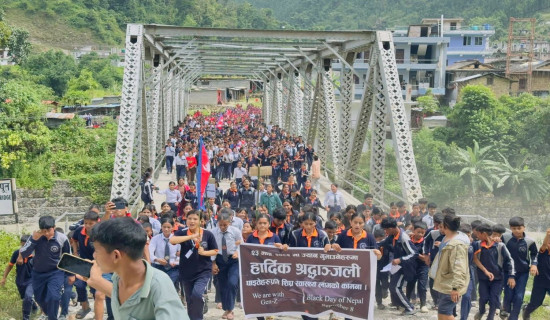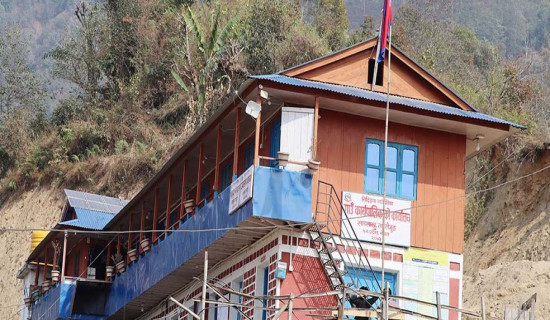- Saturday, 13 September 2025
Sailors rejoice after snowy winter raises Great Salt Lake
On The Great Salt Lake, July 9: A brisk wind caught a Kevlar-fiber sail, sending it snapping as Bob Derby and Randy Atkin pulled lines to turn Red Stripe, their 25-foot boat, through the briny waters of the imperilled Great Salt Lake.
Little could be heard beyond the low hum of trucks wheeling past a copper smelter on the lake's shoreline a respite from the bustle of Salt Lake City and its booming suburbs that push farther into Utah's deserts and farmland each year.
“Everything that happened today drifts off behind you and there’s nothing like it,'” said Derby, a 61-year-old veteran sailor battling cancer. “There's no better therapy than being on the lake.”
It's a feeling old friends Derby and Atkin weren't sure they'd experience again.
The Red Stripe’s return comes after it and hundreds of other sailboats were hoisted out of the shrinking Great Salt Lake as water levels plummeted in recent years, leaving docks along the lake’s parched southern shore caked with dried mud. The harbormaster at Great Salt Lake State Park’s marina, Dave Shearer, wondered whether he’d see their return before he retires.
But a record winter of snow has melted and run down through the creeks, streams and rivers that feed the lake, raising its peak level this season about 6 feet (1.8 meters) from last year's record low enough to let sailors crane their boats back into the water and convene their beloved Wednesday races where cold beer and banter are as important as who wins.
With their return, they've joined many others farmers, skiers and nearby homeowners in rejoicing over the surprise rise of the Great Salt Lake amid long-term megadrought.
“There's finally some life back in the marina,” said Tyler Oborn, who guides pontoon tours on the lake and enjoys fire-dancing on its shoreline.
But it's not clear it will last.
The Great Salt Lake faces a supply-demand imbalance: As climate change-fuelled drought decreases the amount of water that cascades down through the region's mountains and rivers, appetite for water is increasing from booming towns along the Wasatch Front as well as the farmers whose livelihoods hinge on their fields of alfalfa and onions.
“Everybody talks about the lake being up, but it’s coming from a historic low. That was an unbelievable catastrophe,” said Derby, who works for a medical device manufacturer. “Now it’s just like a moderate disaster. I worry that everybody declares victory, says the Great Salt Lake has been saved and that we can stop worrying about conserving water.”
The diminished Great Salt Lake isn't the boating mecca or vacation destination it was decades ago, when its footprint was about twice the size it is now. But it remains a lifeblood for Utah’s economy, sustaining a $1.5 billion-a-year mining industry that extracts minerals including magnesium and table salt, an $80 million brine shrimp industry for fish feed and a $1.4 billlion ski industry that markets itself with the fluffy “lake effect” snow that the geography supplies.
Brigham Young University ecologist Ben Abbott, who authored a January study that warned the lake could dry up within five years, said every foot of lake level rise helps especially in suppressing hazardous dust from the exposed lake bed. But 6 feet and images of boats going back in the water shouldn’t calm the sense of urgency for Utah to take action that could guarantee the lake’s survival, he said.
“Back on a crashing plane is not where we want to be," Abbott said. “We should be viewing this big winter as a lease on life and an opportunity to get our long-term conservation measures in place."
Before the bump from this winter's record snow, dire warnings like Abbott's made saving the Great Salt Lake a top priority for Utah politicians. State and local officials offered millions in incentives to encourage farmers to conserve and pushed education for homeowners and municipalities. (AP)





